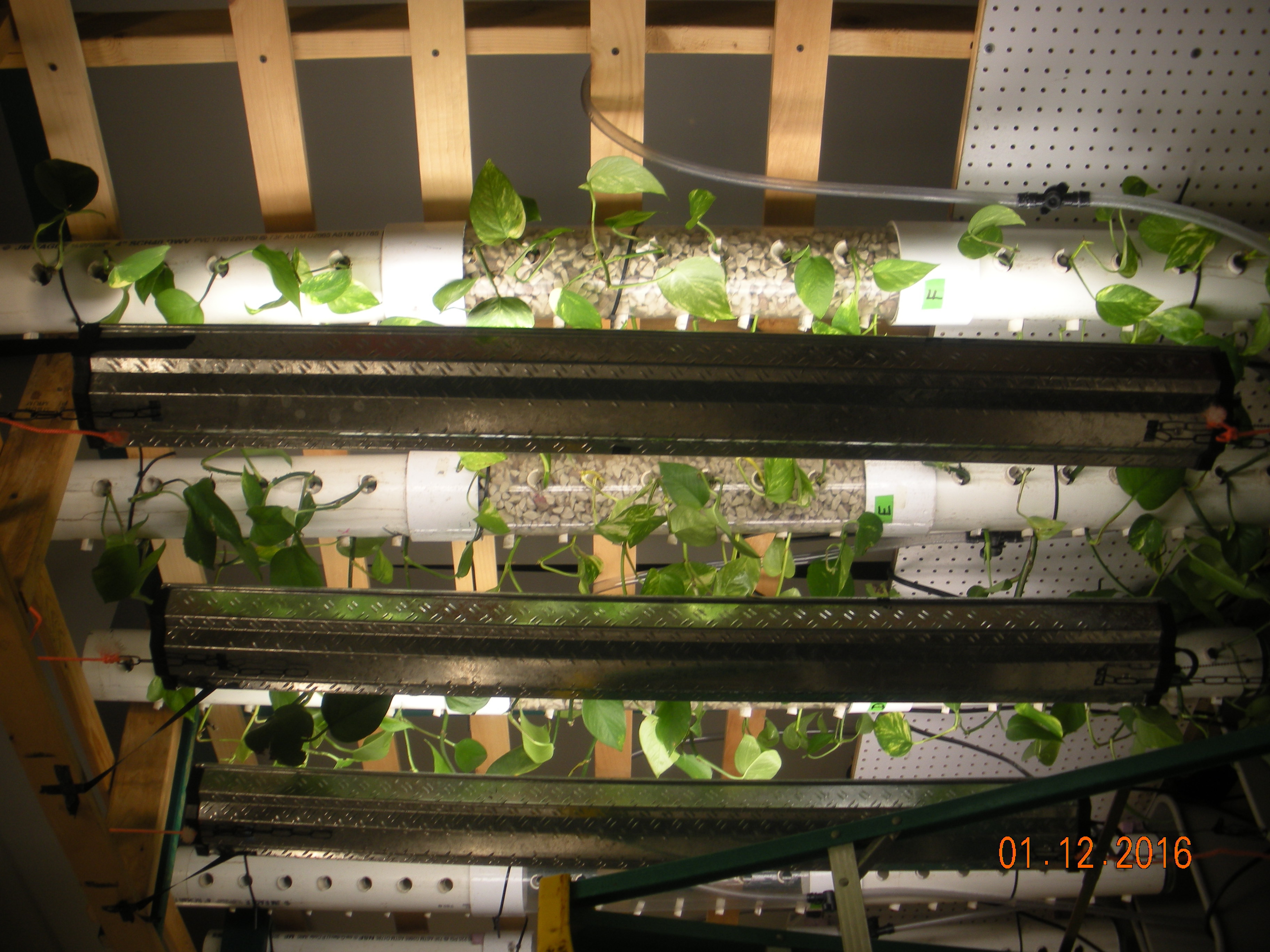Receiving a U.S. patent this spring for a “Novel green technology for treating wastewater from microbreweries,” the team developed a system that incorporates plants, microbes, media in a support structure to create a ‘green wall’—essentially a lush wall garden. The green wall is effective in treating brewery wastewater and the system is low cost and easy to operate. This new option could relieve an overburdened treatment system and the environment, said Scott Wolcott, one of the researchers.
“This is one of the first applications of green walls that I’ve been able to find for any industry to treat wastewater,” said Wolcott, a professor in the Department of Civil Engineering Technology, Environmental Management and Safety in RIT’s College of Engineering Technology. “If you consider any of the smaller micro-breweries, wineries, even cideries, there really has been no application of using green walls as a process.”
Maintaining healthy water systems is a major environmental focus across the state and the country, said project researcher Lee Newman, an associate professor in the Department of Environmental and Forest Biology at ESF. Her expertise is in the area of phytoremediation, the use of plants to clean up environmental contaminants and understanding how biological interactions might enhance plant production.
“Developing low-cost, effective, and environmentally friendly ways to treat wastewater is critical,” she said. “The use of living walls such as these can also reduce negative impacts on air quality as the treated wastewater is sprayed on fields.”
Newman has a long history of working with plants to address environmental problems and is editor-in-chief of the International Journal of Phytoremediation. It was after a seminar on her work where she and Wolcott met that they started working together on this project. Wolcott’s RIT colleagues Josh Goldowitz, also professor in RIT’s Department of Civil Engineering Technology, Environmental Management and Safety; and Peter Martin ‘11 (civil engineering technology) would join the project team.
The work is built upon green technologies such as phytoremediation and current trends in green wall, or plant-based filtration systems. The new system includes an underground sump with plastic columns rising up the wall of the brewery. Within the columns are mixtures of lightweight media such as expanded clay or recycled glass aggregate. Water is pumped through the columns, usually six feet or more, to cycle water with impurities through the system where organic contaminants are bio-degraded and inorganic contaminants such as nitrogen are adsorbed. This equipment filters the water but also allows for an environment for plants and microbes to grow.
“It can cycle like that 24/7,” said Wolcott.
Newman agreed. “Simply put wastewater is high in organic material and when this material is sent to sewer treatment plants it can be costly for the breweries,” Newman said. “Using our technology, these green walls pre-treat the wastewater so that the organic material is lowered to a point that the water can be released into sanitary sewers without incurring excessive sewer use fees or into an on-site septic system without over-taxing the design.”
In New York state, craft breweries have grown from under 100 in 2012 to nearly five times as many in the last several years, according to a report by the New York Craft Brewers Association. It has become a $5 billion industry impacting statewide tourism as well as B2B job growth.
Increased facilities has had an impact on the environment and also costs to brewers.
Companies are regulated as agriculture, versus industry, and have different operational costs and disposal demands, particularly for increased use of water and waste treatment. Similar to wineries, for every gallon of beer produced, there are approximately seven gallons of wastewater that needs to be processed.
“If wineries and breweries were regulated as industry, they would need to treat wastewater before it could be disposed of,” said Goldowitz. “But, if they are regulated as agriculture, as they are now, they can dispose of it on their property through a simple septic system. That was fine when there were three dozen breweries. But now there are more than 300 breweries and wineries, and this isn’t just a Finger Lakes issue. It is happening around the region, the state, and all over the world.”
Newman has worked with Wolcott on designing the treatment systems, including plant and media selection, treatment efficiency and microbial analysis. She is Wolcott’s academic adviser as he completes his doctoral degree with the College of Environmental Science and Forestry. His dissertation is based on research he is doing at RIT. Wolcott also used this research to work with and train a number of undergraduate students, both at RIT and ESF.
Goldowitz is an expert in sustainable water resources and environmental monitoring. While doing work in this area he was contacted by Green Living Technologies International, a Rochester-based green systems and architectural company, to learn more about phytoremediation. The company would donate several pieces of equipment to the project. The team sought a provisional patent, received in 2018, and once completing the process this past spring, they hope to develop a scale-up pilot system with a local micro-brewery and/or smaller winery.
##
Original post https://alertarticles.info



